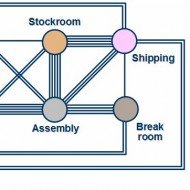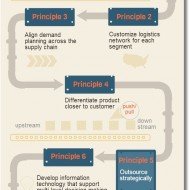Currently Browsing: Project Management
Posted by Managementguru in Human Resource, Marketing, Project Management, Technology
on Oct 28th, 2015 | 0 comments

Best HR Apps For Your Business Development We all know how stressful a HR manager’s job could be. It is his department’s responsibility under his guidance to handle employee relations, payroll management, hiring and layoffs, rewards and remunerations, change and culture management. He can be compared to a mom who is always there to settle scores between son and father. Though the job is definitely tiring in nature, time has come for HR managers to heave a sigh of relief thanks to innovative HR apps that significantly reduces their workload. Apps for Rescue There are now apps that can completely take care of payroll management, network communication, project management, monitoring workforce leave, recruiting and performance management. Think about it, how much of time will be saved if there is some technology that helps you in tracking the sales force performance metrics (especially in IT companies where there are hundreds of thousands of employees), attendance, payroll, etc., Today’s technological scenario is something to be awed at and not to be taken granted for. Small organizations should push themselves one step higher to leverage the functionality of innovative technology for their business development. Download “55 ALL TIME POPULAR HR QUOTES” … Big Data – The Big Boss Data sits at the centre commanding all other entities to obey the rules laid by it. Even giants like Google can no more rely on their intuitions for decision making but rather go for numbers and information. HR is no exception when it comes to adapting new technology. Why can’t companies dare to use new software services – afterall nothing is lost! When you are in a situation to scale up your operations on one end and manage the tight competition on the other, yet you would not opt for a change! That does not make sense in any plausible manner. Think Fast Act Faster Let me introduce you to some of the interesting and enterprising HR apps (free as well as paid versions) that will give some room for HR managers to go for a long pending vacation with their family! It is better to automate your HR functions and please, please think over and above MS Office. Orange HRM: OrangeHRM offers you flexibility and freedom to select from free and paid versions of OrangeHRM backed with specialized expertise. Their HR modules cover core areas like payroll management, employee data management and many more. There’s the free option and paid enterprise version. And it’s all open source so if you have developers you can customize it to your heart’s content. App from Hay Group: Allows your managers to create job descriptions from a library of roles or generic templates defined by their experts, or you can completely start from scratch. Suggests the skills and behaviours needed for a role and gives feedback on job design so your managers know they’re on track. Expense on Demand: Expense On Demand will reduce the time needed to process expense claims by at least 50%. Claims are approved electronically and arrive in Finance department fully coded, validated and approved ready to be paid. Bamboo HR: BambooHR combines all of your employee information from all of your locations into a single view. You can then access, control, sort, analyze, and take action on the data instantly—from your office, the road or home. Kim Rohrer Head of People Operations / Disqus says “BambooHR frees up more time for me to follow my passion in helping people do their jobs better” Greenhouse: Make recruiting your competitive advantage through this app that optimizes your entire recruiting process. Find better candidates, conduct more focused interviews, and make data-driven hiring decisions. I’m listing a set...

Posted by Managementguru in Entrepreneurship, How To, Project Management, Startups
on Sep 27th, 2015 | 0 comments

As entrepreneurs, business owners and marketers, we are obsessed with growth. You must be agile and capable of coming up with intelligent, reasonable solutions that will put you ahead of your competitors. Writing business plan for investors 6 questions you must answer. 1. How big is the business opportunity and is it growing? The first question is how big the business opportunity is and is it growing? To answer this, you need to provide information on the size of the market in which you’re competing and trends affecting the market. 2. What are the financial implications of investing in your company? How much money are you asking the investor for? What are you going to do with that money? What are the projected financial results? For example, what do you expect revenues will be in year one, in year three, in year five? What is expected net income in year one, year three and year five? 3. What is your exit strategy? Your exit strategy is critical when writing a business plan for investors, since the exit strategy dictates how the investor will ultimately receive payback for their investment and get their money out. 4. Who’s on your management team? This is key because most investors, or at least the smartest investors, are betting on the management team as much as they’re betting on the market opportunity. You see, even if you have the greatest business idea in the world, if the management team can’t execute on it, then the business will fail. 5. What risk factors have you altready overcome? Every business has risk factors, and the earlier on in your business, the more risk factors. For example, if you currently have an idea for a new product, the risk factors include, Whether or not you will be able to design the product Whether you could cost effectively manufacture the product Whether consumers/businesses want/will buy the product Whether you can cost effectively market the product Whether you could build a quality management team that can execute on the opportunity 6. What are the barriers to entry? Specifically, once you start growing your company, what is there to prevent others, individuals and companies from stealing your customers? Part 2 of this series is coming through…. Here’s another humble attempt to showcase India’s ‘Most preferred Startups to work for’, startups that promise a great deal of work, value and learning to the professionals and freshers out there. 1. Ola – Founded in Jan 2011 by IIT Bombay alumni Bhavish Aggarwal and Ankit Bhati, Ola is not only India’s most popular mobile app for personal transportation, but also one of the most talked about ‘startups’ from India. Ola has also emerged as the top preferred startup to work for in our survey. The Billion Dollar Unicorn has surely caught the imagination of the young employable population. 2. Zoomcar – At No. 2 is another startup that is solving the problem of urban transportation. This self-drive car rental company raised $11 million from Sequoia Capital, Empire Angels and NGP, a week back. 3. FreeCharge – FreeCharge occupies the third position on the leaderboard. Earlier this year, FreeCharge was acquired by Snapdeal in one of the biggest M&A in the Indian internet ecosystem. 4. Freshdesk – It is encouraging to see a B2B startup occupying the fourth position on this list. Freshdesk is steadily appearing to be one of the best product startups built out of India. Perhaps a testimony to this was its latest $50 Million Series E funding from Tiger Global, Google Capital and Accel. 5. Housing – Unscathed by the myriad controversies surrounding it,...

Posted by Managementguru in Operations Management, Project Management
on Jun 17th, 2015 | 0 comments

Info on Objectives and #Principles of Plant Layout: Plant layout refers to the physical arrangement of production facilities. It is the configuration of departments, work centres and equipment in the conversion process. It is a floor plan of the physical facilities, which are used in production. A plant layout study is an engineering study used to analyze different physical configurations for a manufacturing plant. It is also known as Facilities Planning and Layout. Some Precise Definitions for Plant Layout: According to Moore “Plant layout is a plan of an optimum arrangement of facilities including personnel, operating equipment, storage space, material handling equipment and all other supporting services along with the design of best structure to contain all these facilities”. “Plant layout is the #arrangement of machines, work areas and service areas within a factory”. —George R. Terry “Plant layout involves the development of physical relationship among building, equipment and production operations, which will enable the manufacturing process to be carried on efficiently”. —Morris E. Hurley “Plant layout can be defined as a technique of locating machines, processes and plant services within the factory so as to achieve the greatest possible output of high quality at the lowest possible total cost of manufacturing”. —Sprigal and Lansburg “Plant layout ideally involves the allocation of space and the arrangement of equipment in such a manner that overall operations cost can be minimised.” —J. Lundy From these definitions it is clear that plant layout is arrangement and optimum utilisation of available resources in such a manner so as to ensure maximum output with minimum input. Objectives of Plant Layout: The primary goal of the plant layout is to maximise the profit by arrangement of all the plant facilities to the best advantage of total manufacturing of the product. The objectives of plant layout are: Streamline the #flow of materials through the plant. Facilitate the manufacturing process. Maintain high turnover of in-process inventory. Minimise materials handling and cost. Effective utilisation of men, equipment and space. Make effective utilisation of cubic space. Flexibility of manufacturing operations and arrangements. Provide for employee convenience, #safety and comfort. Minimize investment in equipment. Minimize overall production time. Maintain flexibility of arrangement and operation. Facilitate the #organizational structure. Principles of Plant Layout: Principle of integration: A good layout is one that integrates men, materials, machines and supporting services and others in order to get the optimum utilisation of resources and maximum effectiveness. Principle of minimum distance: This principle is concerned with the minimum travel (or movement) of man and materials. The facilities should be arranged such that, the total distance travelled by the men and materials should be minimum and as far as possible straight line movement should be preferred. Principle of cubic space utilisation: The good layout is one that utilise both horizontal and vertical space. It is not only enough if only the floor space is utilised optimally but the third dimension, i.e., the height is also to be utilised effectively. Principle of flow: A good layout is one that makes the materials to move in forward direction towards the completion stage, i.e., there should not be any backtracking. Principle of maximum flexibility: The good layout is one that can be altered without much cost and time, i.e., future requirements should be taken into account while designing the present layout. Principle of safety, #security and satisfaction: A good layout is one that gives due consideration to workers safety and satisfaction and safeguards the plant and machinery against fire, theft, etc. Principle of minimum handling: A good layout is one that reduces the material handling to the...

Posted by Managementguru in Business Management, Marketing, Operations Management, Project Management, Sales
on Feb 3rd, 2015 | 0 comments

What is Supply Chain Management? Investopedia: Supply chain management (SCM) is the streamlining of a business’ supply-side activities to maximize customer value and to gain a competitive advantage in the marketplace. SCM represents an effort by suppliers to develop and implement supply chains that are as efficient and economical as possible. Wikipedia: Supply chain management (SCM) is “the systemic, strategic coordination of the traditional business functions and the tactics across these business functions within a particular company and across businesses within the supply chain, for the purposes of improving the long-term performance of the individual companies and the supply chain as a whole.” Business Dictionary: Management of material and information flow in a supply chain to provide the highest degree of customer satisfaction at the lowest possible cost. SCM requires the commitment of supply chain partners to work closely to coordinate order generation, order taking, and order fulfillment. They thereby create an extended enterprise spreading far beyond the producer’s location. 7 Principles of SCM Supply Chain Management in Simpler Terms: The EFFECTIVE movement and management of materials and information as they flow from their source to the end customer. Supply Chain encompasses purchasing, manufacturing, warehousing, transportation, customer service, demand planning and supply planning. SCM is a daunting task and calls for proper planning and execution. OBJECTIVES OF FORECASTING SCM is the control of the supply chain as a process from supplier to manufacturer to wholesaler to retailer to consumer. SCM does not only comprise the passage of a physical product through the chain but also any data that goes along with the product (such as order status information, payment schedules, and ownership titles) and the actual entities that handle the product from stage to stage of the supply chain. There are essentially three goals of SCM: To reduce inventoryTo increase the speed of transactions with real-time data exchange andTo increase revenue by satisfying customer demands more efficiently. When you think of the world’s most efficient and successful performance and supply chains, what comes to mind? For me it is not Wal-mart or Pepsi but Mumbai Dabbawalas – Watch this Video. The Success of Supply Chain of Dabbawalas in Mumbai –Said to be Six Sigma Compliant No over-reliance on technology, all manual operationsCreate an integrated performance chain, the chief, team leaders and delivery men.Acute visibilityKeep it simple. Real simple with a color coding to identify where the food has to be delivered and to whom.Timely Delivery as the shelf life of food is 4-5 hours. Why is it so important for companies to get products to their customers quickly? Faster product availability is significant to increasing sales and there’s a sizeable profit advantage for the extra time that you are in the market and your competitor is not. The earlier and faster you are in the market, the more orders and market share you enjoy. The ability to deliver a product faster also can make or break a sale. If two competitive products appear to be equal and one is immediately available and the other will be available in a week, which would you choose? Supply Chain Management is all about moving goods more quickly to their destination in a strategic and tactical manner. Supply Chain Management Tomorrow: The future for Supply Chain Management looks very bright. Two major trends are benefiting Supply Chain Management operations- Customer service focus and Information technology. Successful organisations must excel in both of these areas, the fundamental objective being to “ADD...

Posted by Managementguru in Accounting, Financial Accounting, Financial Management, Management Accounting, Project Management, Training & Development
on Jan 21st, 2015 | 0 comments

What Does a Career in Accounting Demands for? Are you vying for a career in accounting field? Everybody envy accountants for there is a misconception that they are Demi-Gods. Though a good accounts manager can act like one who can save you from a dire situation by manipulating the accounts skilfully, the demands and challenges in this field are too high to be savored. Purchase Your Copy of “Careers with a Degree in Accountancy and Finance” at Gumroad So what does it take to become a reputed accounts man in your circle and also enjoy what you do! Self analysis is the best way to understand what you really want to be. There are certain traits characteristic to people belonging to this community. See if you are gifted with those attributes; if not, you can always train yourself to gain expertise. 1. Are you good at numbers– Mathematics, Yuck! If this is your reaction please quit reading this article as numbers play an integral role in accountancy. Figures, Figures and more Figures determine the profit and loss status of a company. If you are passionate about playing with numbers it goes without saying you are already a half accountant. The thrill of taking control and handling numbers make or break a company. Jackie Mansion jocularly puts it – “Did you ever hear of a kid playing accountant – even if they wanted to be one?” 2. Are you a good listener and can you read between the lines? A good auditor will allow the client to talk and listen to what he says. Then he tries to extract the exact kind of information he needs to make the ends meet. Empathy is an innate quality and if you are not going to be a good listener then please revise your consideration of becoming an accountant. Sometimes the client may not know what you wish to seek; it is your responsibility to frame simple questions in a language that he understands and pull out answers. 3. Can you avoid being temperamental? 90% of the time your clients are going to say “No” to whatever you suggest. Alas, it is not their fault; the corporate Bosses and CEO’s always aim big and most probably will not be aware of the consequences of their impulsive actions. They always think about clinching a deal and conveniently overlook the effects of their financial and corporate decisions on the account and subsequently on the accountant. For example cash has to be handled very carefully and every penny has to be accounted for properly. A bank cashier will know the importance of cash handling as it is very important for them to balance the inflow and outflow at the end of the day. For corporate firms, it becomes mandatory to reduce the cash dealings and account every transaction in the form of a check or electronic transfers like RTGS or NEFT or EFT. The point is, you should have the nerve to talk to a company’s head if he is planning for a bad move and suggest what could be done for the good of the company (Income tax and Sales purposes). 4. Are you wise when it comes to choosing clients? Whether you are a part time practitioner, Full time accountant, Accounts manager or Free lancer, do your homework before accepting the offer. Ultimately you need to see your payments coming through and nobody works here for a song. Big practitioners take a big cut half yearly or annually but if you are a part time accountant, it is always better to go for monthly payments or get paid after the completion of individual project s....










